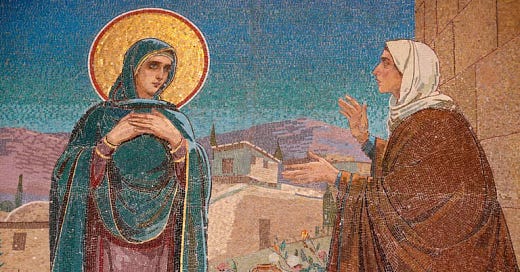What Is the Visitation of Mary to Elizabeth?
Reflecting on The Seventh Sunday of Easter: Two Days after Sunday (Year C)
Scripture
Old Testament: 1 Samuel 2:1-10
Psalter: Psalm 113
Epistle: Romans 12:9-16b
Gospel: Luke 1:39-57
___
Prayer
Blessed God, who danced in our hearts, filling us with the knowledge of your presence: let your proclamation sing forth from us as it sang from the lips of Hannah and Elizabeth, announcing the coming of your promise and the fulfillment of your d…
Keep reading with a 7-day free trial
Subscribe to Faith Seeking Understanding to keep reading this post and get 7 days of free access to the full post archives.




